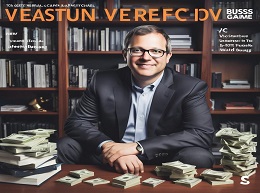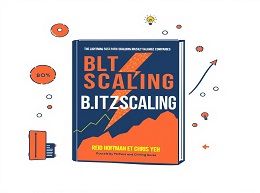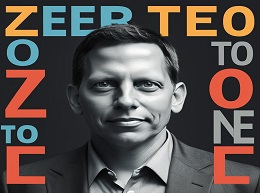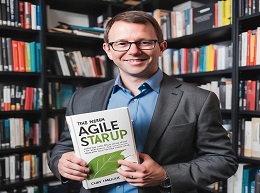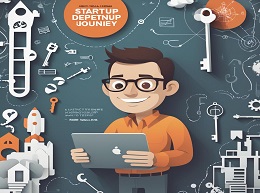Make Elephants Fly

Make Elephants Fly: A Comprehensive Review and Insights
Innovation is the lifeblood of successful enterprises, but transforming big ideas into reality is often fraught with challenges. In "Make Elephants Fly: The Process of Radical Innovation," author Steven S. Hoffman provides a detailed roadmap for achieving groundbreaking innovation. This review explores Hoffman's key concepts, supported by engaging examples, to offer valuable insights for aspiring innovators and entrepreneurs.
About the Author
Steven S. Hoffman, also known as Captain Hoff, is a seasoned entrepreneur, venture capitalist, and founder of Founders Space, a leading startup accelerator. His extensive experience in guiding startups and his deep understanding of the innovation process underpin the practical advice and strategies presented in "Make Elephants Fly." Hoffman's dynamic approach and real-world insights make this book a must-read for anyone looking to foster innovation within their organization.
The Structure of the Book
"Make Elephants Fly" is structured to guide readers through the entire innovation process, from ideation to execution. The book is divided into several key sections:
1. Understanding Radical Innovation
2. Creating a Culture of Innovation
3. The Innovation Process
4. Overcoming Obstacles
5. Scaling Innovation
Each section is packed with actionable advice, expert interviews, and illustrative examples that bring the concepts to life.
Defining Radical Innovation
Hoffman begins by defining what sets radical innovation apart from incremental improvements. Radical innovation involves creating entirely new markets or disrupting existing ones with groundbreaking products or services.
Example: Tesla's Electric Vehicles
Tesla's introduction of electric vehicles (EVs) serves as a prime example of radical innovation. By challenging the dominance of internal combustion engines and creating a viable market for EVs, Tesla disrupted the automotive industry and set new standards for sustainability and performance.
The Importance of Vision
A key element of radical innovation is having a clear and compelling vision. Hoffman emphasizes that visionaries like Elon Musk or Steve Jobs were able to see possibilities others missed, which enabled them to drive their companies toward extraordinary achievements.
Example: Apple's iPhone
The launch of the iPhone in 2007 exemplifies the power of vision. Steve Jobs envisioned a device that combined a phone, an iPod, and an internet communicator. This vision not only disrupted the mobile phone industry but also created a new ecosystem for apps and services.
Building an Innovative Environment
Hoffman argues that fostering a culture of innovation is critical for sustained success. This involves creating an environment where creativity is encouraged, and risk-taking is rewarded.
Example: Google's 20% Time
Google's policy of allowing employees to spend 20% of their time on side projects has led to the creation of numerous successful products, including Gmail and Google Maps. This culture of innovation empowers employees to explore new ideas and contributes to Google's continual growth.
Encouraging Collaboration
Innovation thrives on collaboration. Hoffman highlights the importance of building diverse teams and facilitating open communication to generate a wide range of ideas and solutions.
Example: Pixar's Braintrust Meetings
Pixar's Braintrust meetings are a hallmark of its collaborative culture. During these sessions, directors present their projects to a group of peers who provide candid feedback. This collaborative process has been instrumental in producing critically acclaimed films like "Toy Story" and "Finding Nemo."
From Ideation to Execution
Hoffman outlines a structured innovation process that begins with ideation and moves through validation, development, and execution. He emphasizes the importance of systematically testing and refining ideas to increase their chances of success.
Example: Dropbox's Minimum Viable Product (MVP)
Dropbox started with a simple MVP: a video demonstrating the product's functionality. This allowed the founders to gauge interest and gather feedback before investing heavily in development. The positive response validated their idea and paved the way for further development and eventual success.
Leveraging Technology
Technology plays a crucial role in enabling innovation. Hoffman discusses how leveraging the latest technological advancements can provide a competitive edge and open up new opportunities.
Example: Amazon Web Services (AWS)
Amazon leveraged its expertise in cloud computing to create AWS, a platform that has become the backbone for countless startups and enterprises. By offering scalable and cost-effective cloud solutions, AWS has driven innovation across various industries.
Addressing Resistance
Innovative ideas often face resistance from within and outside the organization. Hoffman provides strategies for overcoming skepticism and gaining buy-in from key stakeholders.
Example: Netflix's Shift to Streaming
When Netflix shifted from DVD rentals to streaming, it faced significant resistance from customers and industry players. By persisting and effectively communicating the benefits of streaming, Netflix successfully navigated the transition and established itself as a leader in digital entertainment.
Managing Failure
Failure is an inevitable part of the innovation process. Hoffman emphasizes the importance of learning from failures and using them as stepping stones to success.
Example: SpaceX's Early Failures
SpaceX experienced several high-profile failures in its early attempts to launch rockets. Instead of giving up, Elon Musk and his team analyzed the failures, made improvements, and eventually achieved groundbreaking successes, including reusable rockets and commercial space missions.
Taking Innovations to Market
Successfully bringing an innovation to market requires strategic planning and execution. Hoffman discusses the importance of understanding market dynamics, building effective distribution channels, and scaling operations to meet demand.
Example: Uber's Global Expansion
Uber's rapid global expansion strategy involved adapting its business model to different markets, navigating regulatory challenges, and establishing local partnerships. This strategic approach enabled Uber to scale quickly and become a dominant player in the ride-sharing industry.
Sustaining Growth
Sustaining growth involves continually innovating and adapting to changing market conditions. Hoffman stresses the importance of maintaining an innovative mindset and staying ahead of competitors.
Example: Apple's Product Ecosystem
Apple's continuous innovation across its product lines, from the iPhone to the Apple Watch, has allowed it to sustain growth and remain a market leader. By creating a seamless ecosystem of products and services, Apple keeps customers engaged and loyal.
Practical Insights and Takeaways
"Make Elephants Fly" is rich with practical insights and actionable advice. Key takeaways include:
- Cultivate Vision : A compelling vision drives radical innovation.
- Foster a Culture of Innovation : Create an environment that encourages creativity and risk-taking.
- Leverage Collaboration : Diverse teams and open communication are critical for generating innovative ideas.
- Systematize the Innovation Process : Move from ideation to execution through systematic testing and refinement.
- Overcome Resistance : Address skepticism and gain buy-in from stakeholders.
- Learn from Failure : Use failures as learning opportunities and stepping stones to success.
- Strategically Scale : Plan and execute effectively to bring innovations to market and sustain growth.
"Make Elephants Fly: The Process of Radical Innovation" by Steven S. Hoffman is an essential read for anyone seeking to foster innovation and drive growth within their organization. Hoffman's blend of practical advice, expert insights, and real-world examples provides a comprehensive guide to navigating the challenges of radical innovation.
Whether you are an entrepreneur, a corporate leader, or an aspiring innovator, "Make Elephants Fly" offers the tools and knowledge needed to turn big ideas into reality. By following the principles outlined in the book, you can create a culture of innovation, overcome obstacles, and achieve sustained growth in today's competitive landscape.
In a world where the ability to innovate can make or break a company, Hoffman's insights are invaluable. "Make Elephants Fly" not only inspires but also equips readers with the strategies and mindset required to achieve extraordinary success.
